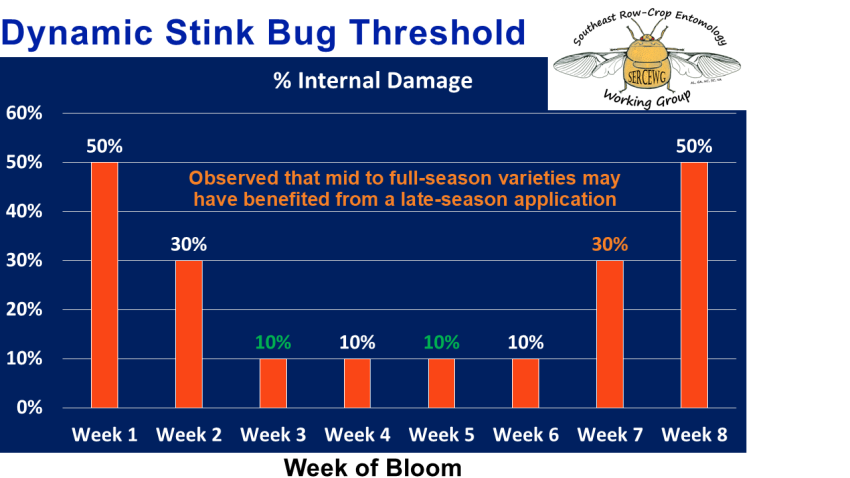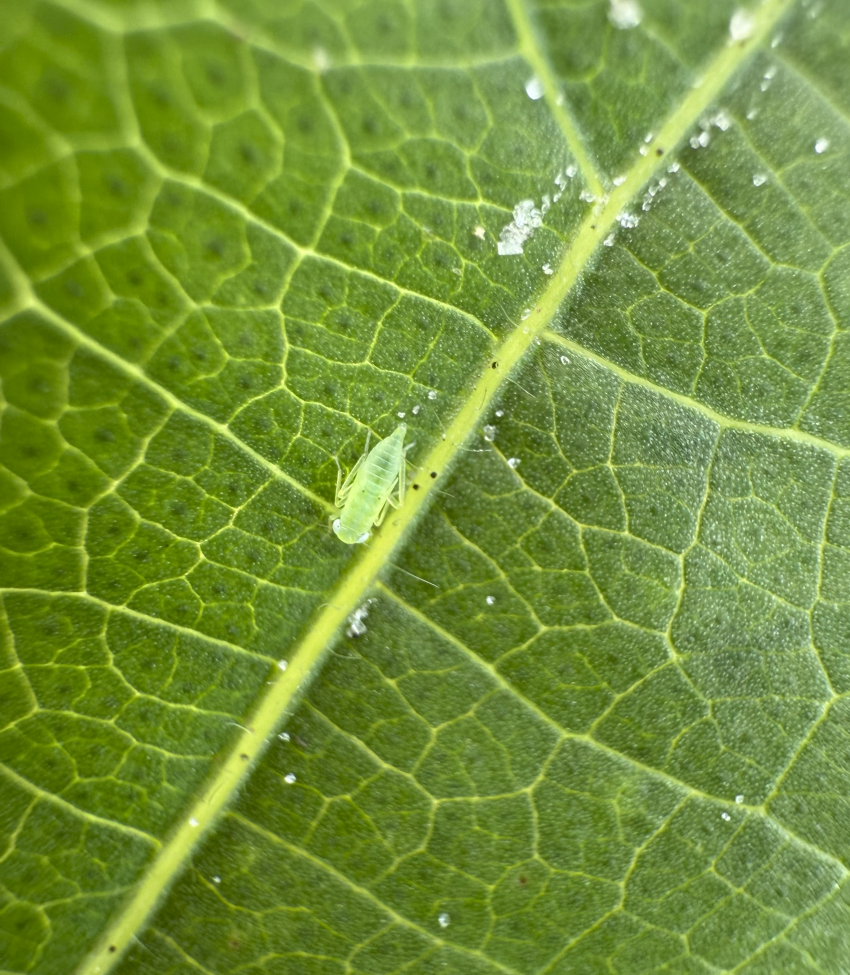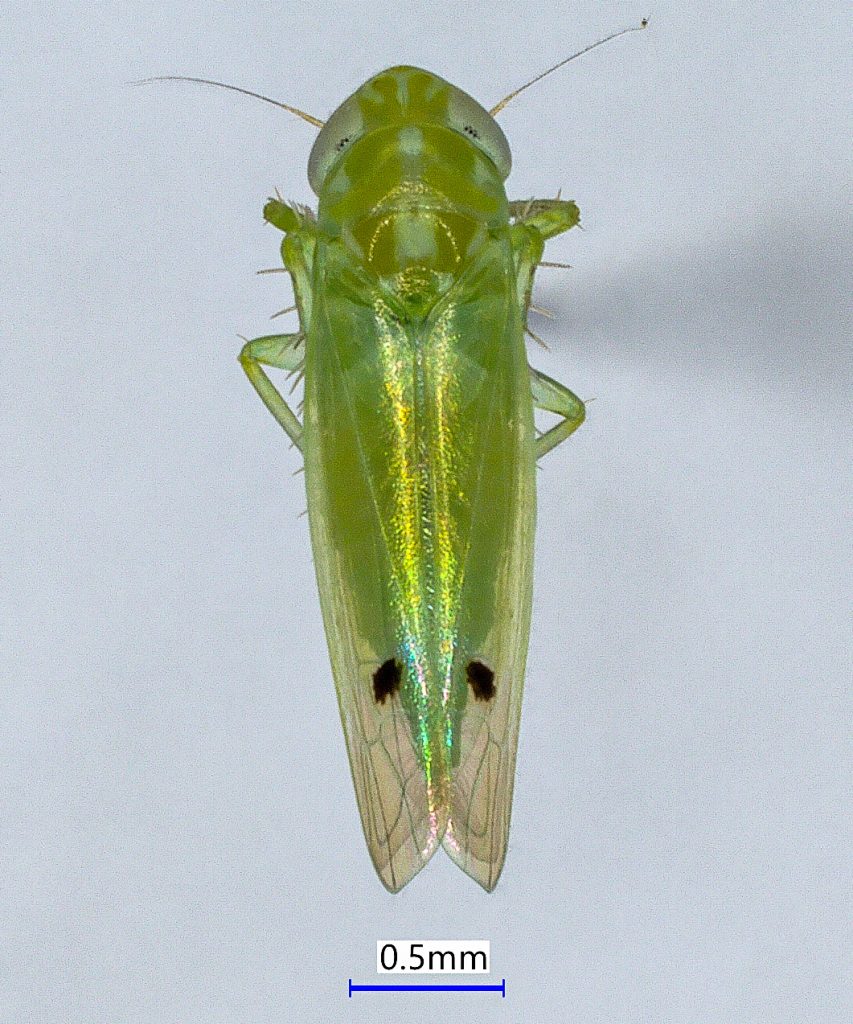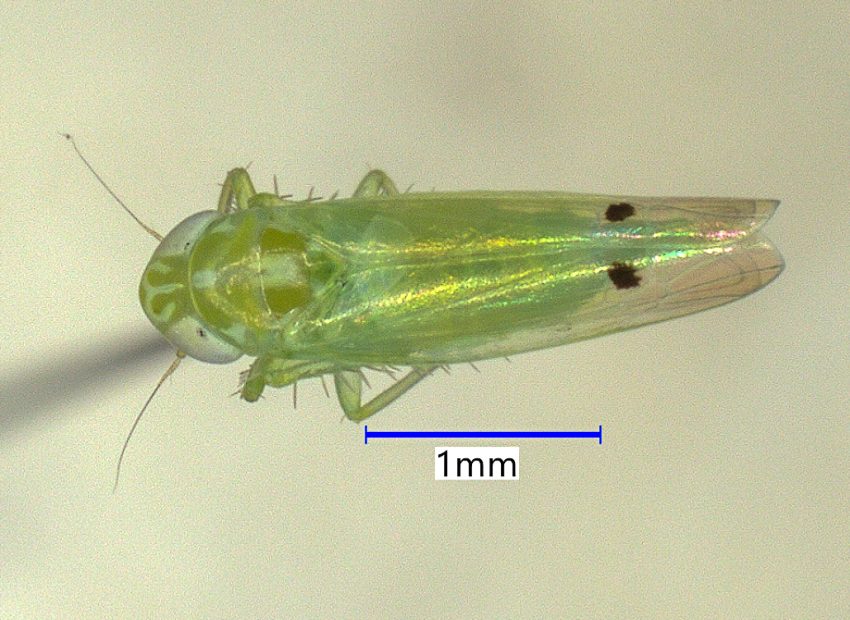Cotton across the Panhandle is at various stages of development, from early vegetative, to squaring, to bloom. Insect pest activity has been relatively light so far, but it appears to be increasing; stink bugs and plant bugs are moving into fields. Early planted cotton (4/15/25) at the NFREC-Quincy reached treatment thresholds last week. Stink bugs prefer 10 to 14-day-old bolls, so be sure to crack green bolls for signs of internal injury if you have bolls at this stage and follow the Southeastern Dynamic Stink Bug Threshold. Most pyrethroids work well for stinkbugs. Brown stink bugs are a little tougher to kill, so Bifenthrin at 6.4 oz/a is the most effective and what is used in our trials.

Dynamic stink bug threshold based on the percent of green boll injury per week of bloom. Figure created by. I.L. Esquivel
I want to bring to your attention a new invasive pest, the Two-Spotted Cotton Leafhopper (Amrasca biguttula), which appears to be moving into cotton fields. The two-spotted cotton leafhopper is native to the Indian subcontinent, where it is a serious pest of cotton, okra, and eggplant. It was first detected in the U.S. Virgin Islands and Puerto Rico in the spring of 2023 on cotton and eggplant. Late last fall, it was detected in cotton in Jackson County and multiple counties in South Florida. Last week, I received a call about potential populations in cotton in Gilchrist County and then confirmed active populations in three commercial cotton fields. This week, it was detected at the NFREC in Quincy as well as commercial fields in Jackson and Calhoun counties.
The two-spotted cotton leafhopper is small, pale green with yellowish-green wings. It can be distinguished from most native species in North America by the pair of black spots on the head and black spots at the tip of each wing. Like other leafhoppers, they feed on plant cell contents and are often found on the underside of leaves. In cotton, high populations can produce a “hopper burn” effect characterized by yellowing, reddening, and browning of the leaves. This injury can lead to square, flower, and boll abscission, leading to yield losses.
At this time, there is no need to panic if you detect it in your fields, as it is unclear whether this pest will reach populations high enough to cause significant injury, like in its native range. Also, because it seems to be moving into cotton at period when most folks are beginning to make plant and stink bug applications, those sprays are expected to control the two-spotted cotton leafhopper as well. While there are no current U.S recommendations to manage this pest, UF/IFAS will be conducting field and lab insecticide trials this year to determine effective products.
We are also very interested in the distribution of this pest in the Panhandle. If you suspect you have the two-spotted cotton leafhopper in your field this season, please reach out to me (Isaac.Esquivel@ufl.edu, Office: 850-875-7146), Regional Crop IPM Agent Ethan Carter (ethancarter@ufl.edu, 850-482-9620), or your local county agent.



